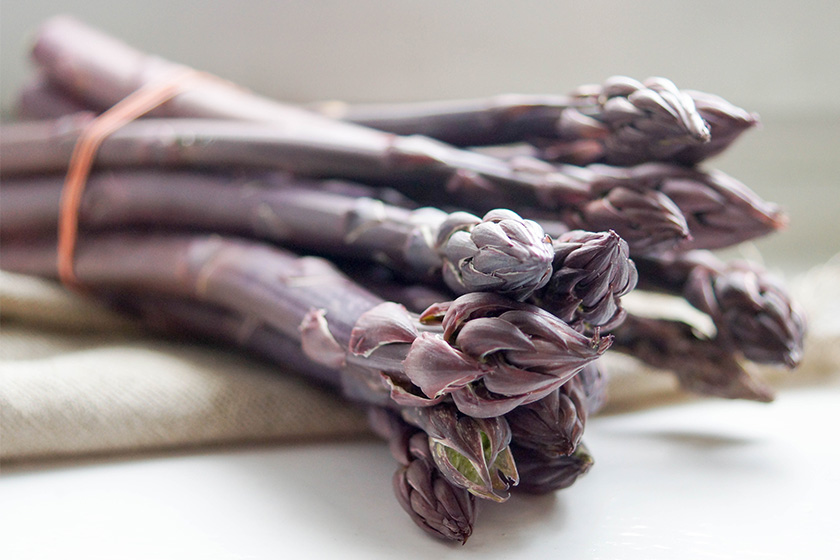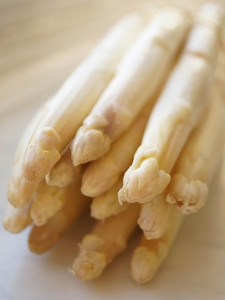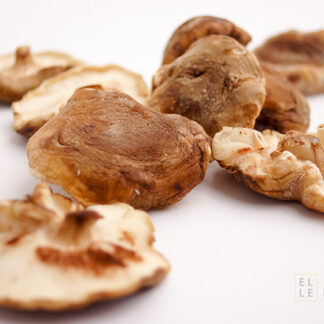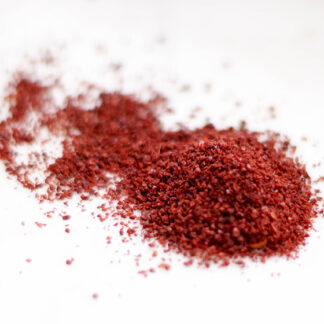
Asparagus has a wonderfully subtle flavor that works well with almost anything—in summer salads or as a perfect side dish for pretty much any meal.
When I see all sorts of asparagus start to appear at the farmers market each spring, I really can’t resist buying some and so starts my short stinted asparagus binge. Asparagus plants produce their “spears” for a mere 6 to 8 weeks each spring, so the season is indeed short. In Germany, “Spargelzeit” generally runs from late April and peaks through May and June. By mid-late June, when the season is over, I have definitely had my fill of green, white and purple and look forward to next year when I can enjoy it again.
PURPLE (VIOLA) ASAPARAGUS
Originally developed in Italy, Viola asparagus is similar in appearance and flavor to the white and green varieties, though is differentiated by its violet hue, tender, less fibrous texture and fragrant flavor, offering a preferred sweetness – it has a twenty percent higher sugar content than other asparagus varieties and tastes great raw! Plus the whole spear can be eaten from tip to toe.
Viola asparagus’ beautiful purple color is a consequent of powerful phytonutrients called anthocyanin. Unfortunately, it loses its beautiful color and turns green when cooked (sorry, but sadly enough heat destroys its lovely purple pigment), losing all its novelty, so best enjoy this gourmet version, preferably raw, while you can!

WHITE ASPARAGUS
Long considered a delicacy by Europeans, white asparagus commands a much higher price than the familiar green asparagus. Since white asparagus spears have never been touched by sunlight, they remain white in color and delicate in texture and flavor.

They are cultivated by covering up the shoots with soil as they grow; so without the exposure to sunlight, photosynthesis is unable to start, as a result, the shoots remain white. This requires quite a bit of manual labor to harvest thus making them more expensive.
Keep in mind when buying white asparagus — purple coloring is considered a flaw so be sure to look for pure white tips. Also, white asparagus has a much woodier outside than the green variety and takes longer to cook. Freshness is also very important and the lower ends of white asparagus must be peeled before cooking or raw consumption.
They are best cooked using a tall, narrow asparagus pot, which allows the stalks to steam, while keeping the tender tips out of reach from boiling water.
GREEN ASPARAGUS
Popular and commonly known, green asparagus derives its color from the process of photosynthesis as the spears emerge from the soil and are bathed in sunlight. Look for long, thick dark green glossy spears with tightly closed heads — these are the best. It’s a common misconception that thin spears are young shoots and therefore more tender. Not the case.

Some interesting asparagus facts:
On a warm spring day, you can almost watch the asparagus grow – a stalk of asparagus can grow up to 18 cm in a single day – almost faster than it can be harvested! If left to grow, asparagus can grow to be 1.2 to 1.8 meters tall!
Asparagus is expensive for the following reasons:
1 The shoots grow at varying stretches of time and so have to be harvested one at a time — by hand — and at different variables of time.
2 It has a season of about 6 weeks – only!
3Despite of the short season, the plants must occupy the same plot of land for the entire year, meaning that the farmer can’t plant a crop of something else after the asparagus has been harvested. Bummer.
Benefits:
Asparagus contains prebiotics which strengthen the digestive system, and have diuretic and laxative properties that help treat digestive problems, flushing out toxins from the body while alleviating bloating and cramps. Plus they are rich in fibre, also amazing for your digestive tract.
Asparagus contains anti-inflammatory nutrients, which produces an effect that can help alleviate symptoms of arthritis and rheumatism.
The high alkalinity, as well as antioxidants, asparagus reduce bloody acidity, cleanses tissues helps protect the body’s cells from the damage which that can lead to chronic diseases.
Loaded with a diverse array of vitamins and minerals, asparagus is low in calories and carbs but high in protein, potassium, vitamins A and C. Plus its high in vitamin K, with just one cup providing 70% of your daily intake. All of which helps normalize estrogen levels and combat against osteoporosis and heart diseases.





